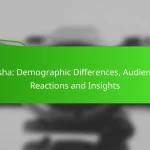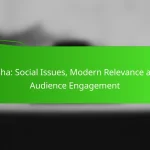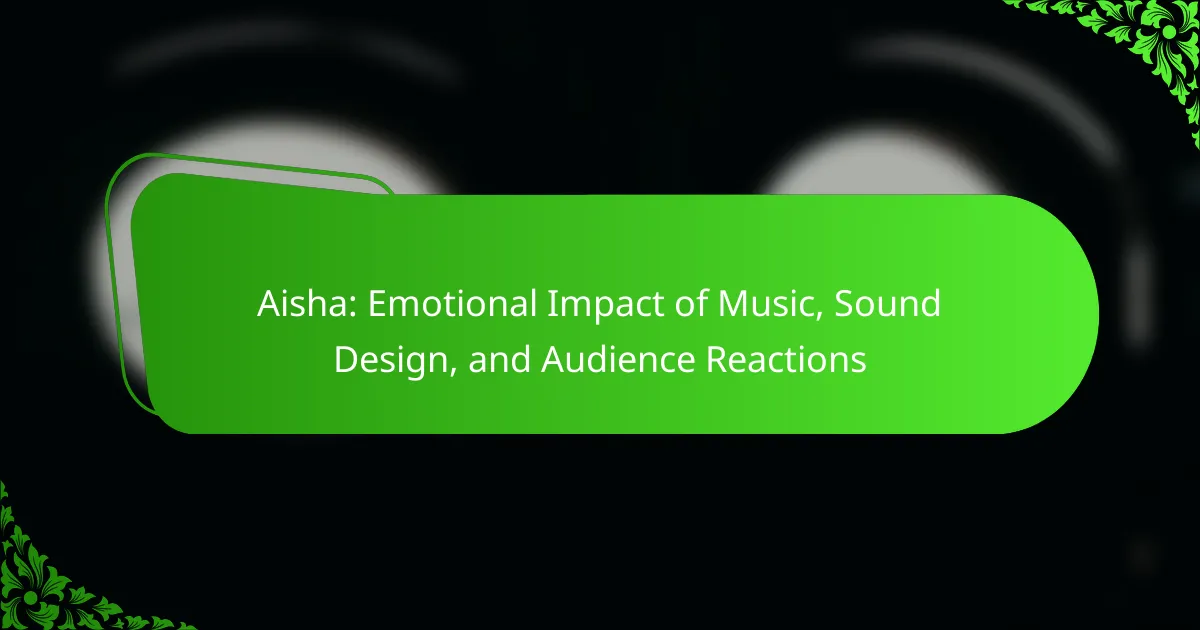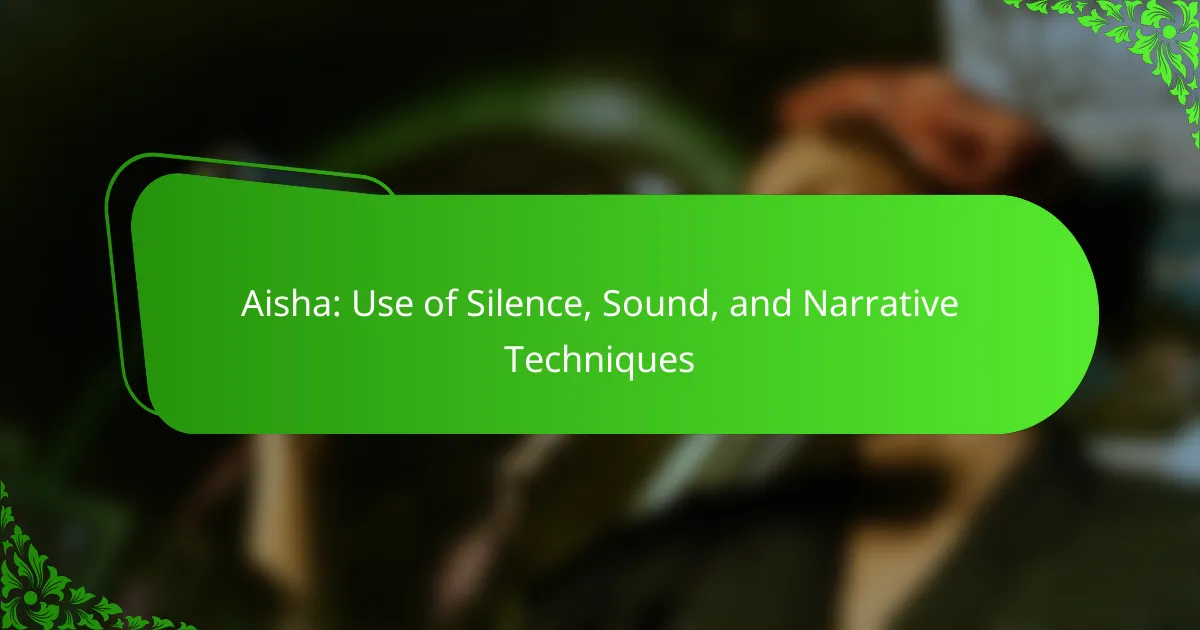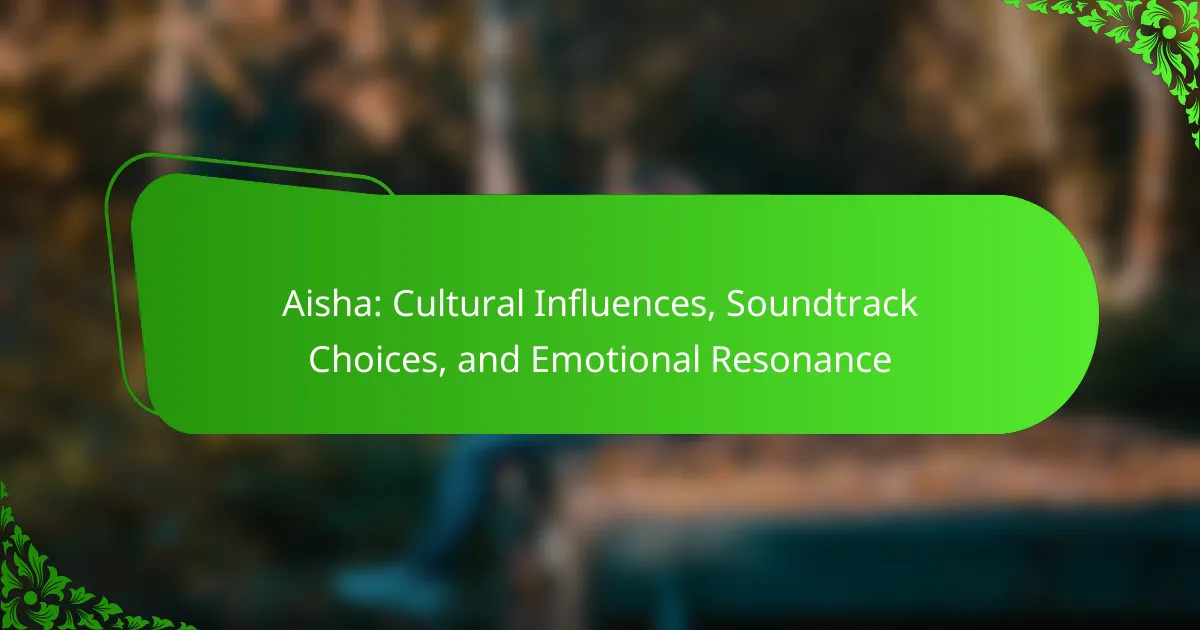The emotional impact of music and sound design plays a crucial role in shaping audience reactions to media. By evoking feelings and memories, music enhances the overall experience and fosters a deeper connection with the content. Additionally, effective sound design carefully curates auditory elements to elicit specific emotions, further enriching storytelling and engagement.
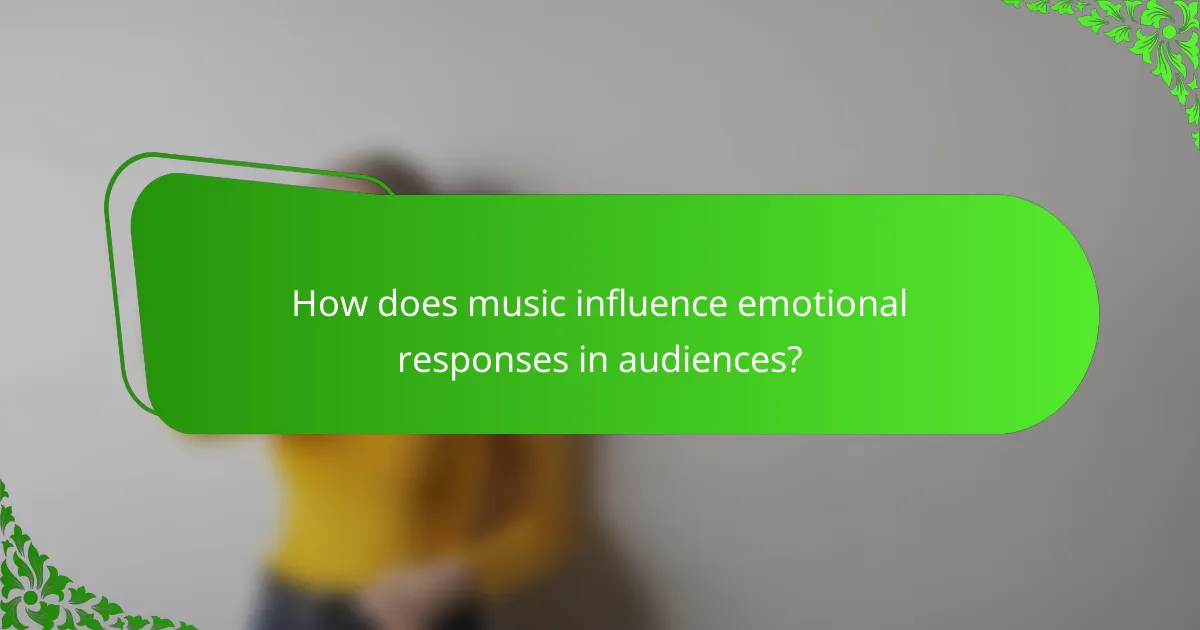
How does music influence emotional responses in audiences?
Music significantly influences emotional responses in audiences by evoking feelings and memories that enhance the overall experience. It can create a connection between the audience and the content, making moments more impactful and memorable.
Music triggers emotional memories
Music has a unique ability to trigger emotional memories, often linked to personal experiences. For instance, a specific song may remind someone of a significant life event, such as a wedding or a loss, instantly evoking those feelings again.
When audiences hear familiar melodies, their brains can recall associated emotions, creating a deeper engagement with the material. This phenomenon is often utilized in films and advertisements to enhance emotional resonance.
Soundtracks enhance storytelling
Soundtracks play a crucial role in enhancing storytelling by setting the tone and mood of a scene. A well-composed score can amplify tension, joy, or sadness, guiding the audience’s emotional journey throughout the narrative.
For example, a suspenseful score can heighten anxiety during a thrilling scene, while a soft, melodic tune can evoke nostalgia. Filmmakers often choose specific genres or styles of music to align with the emotional arc of the story.
Live performances evoke stronger feelings
Live performances tend to evoke stronger feelings compared to recorded music due to the energy and interaction between the performers and the audience. The immediacy of a live setting can amplify emotions, creating a shared experience that resonates deeply.
Factors such as the atmosphere, audience reactions, and the artist’s presence contribute to this heightened emotional impact. Attendees often report feeling more connected to the music and the message when experiencing it live, making it a powerful medium for emotional expression.
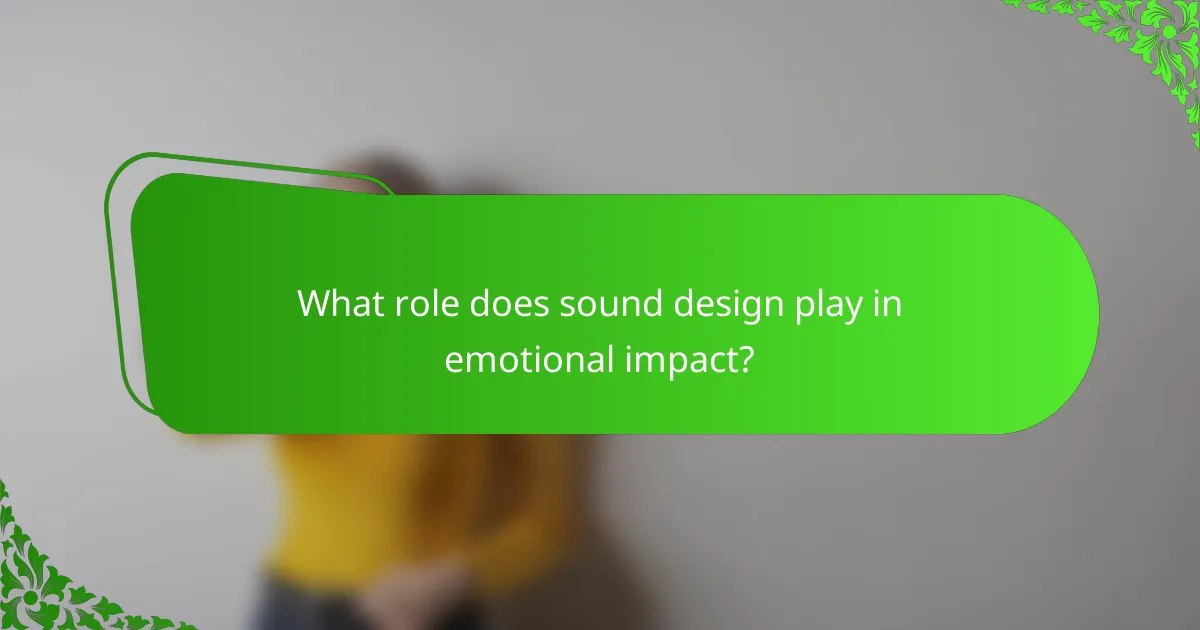
What role does sound design play in emotional impact?
Sound design significantly influences emotional impact by shaping how audiences perceive and react to media. It encompasses the selection and arrangement of sounds to evoke specific feelings and enhance storytelling.
Sound design shapes audience perception
Sound design plays a crucial role in guiding audience perception by creating a sonic environment that complements visual elements. For instance, the use of dissonant sounds can evoke tension, while harmonious tones may induce calmness. By carefully crafting audio elements, creators can manipulate how viewers interpret scenes and characters.
Effective sound design can also reinforce narrative themes. For example, a suspenseful score can heighten anxiety during critical moments, making the audience more engaged and emotionally invested in the story.
Layering sounds creates immersive experiences
Layering sounds involves combining multiple audio elements to create a rich auditory landscape. This technique enhances immersion by making environments feel more realistic and engaging. For example, in a forest scene, layering birdsong, rustling leaves, and distant animal calls can transport the audience into that setting.
When layering sounds, consider the balance and clarity of each element. Overlapping too many sounds can lead to confusion, while well-placed audio layers can enhance depth and realism, making the experience more captivating.
Soundscapes influence mood and atmosphere
Soundscapes are essential in establishing mood and atmosphere, as they set the emotional tone for scenes. A serene soundscape with gentle music and soft nature sounds can evoke tranquility, while a chaotic soundscape filled with loud noises can create feelings of distress or urgency.
To effectively use soundscapes, think about the emotional journey you want the audience to experience. Tailoring sound elements to match the visual narrative can significantly enhance the overall impact, ensuring that the audience feels the intended emotions throughout the piece.
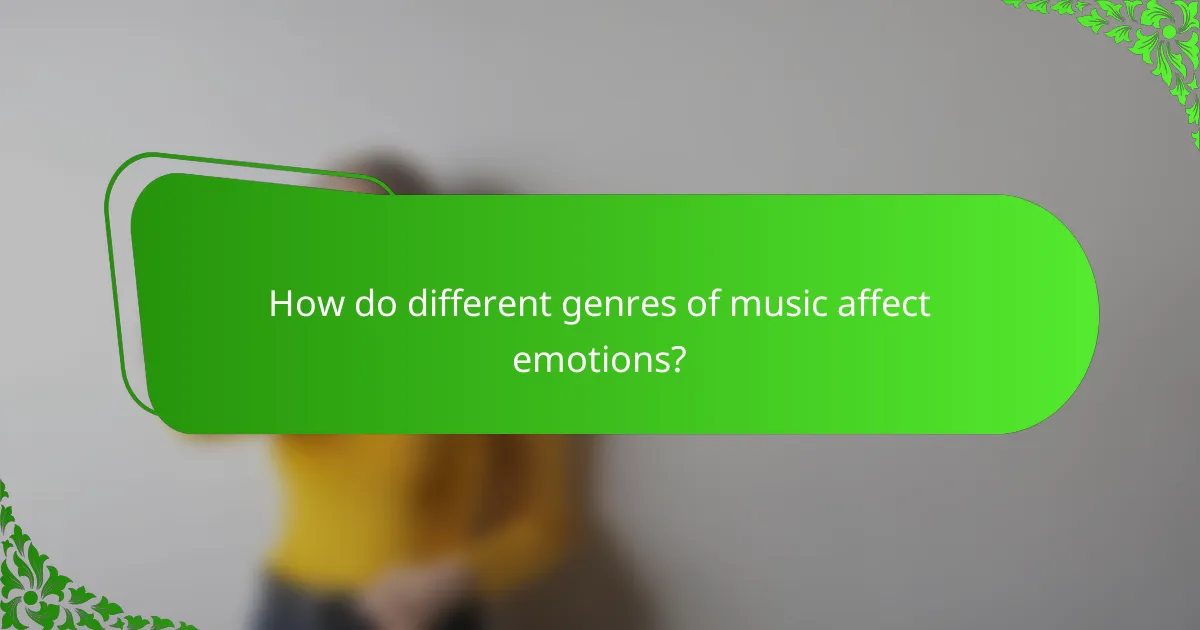
How do different genres of music affect emotions?
Different genres of music significantly impact emotions by evoking specific feelings and moods. Each genre has unique characteristics that can influence listeners’ emotional states, from calmness to happiness or nostalgia.
Classical music induces calmness
Classical music is often associated with tranquility and relaxation. Its structured compositions, gentle melodies, and harmonious arrangements can lower stress levels and promote a sense of peace.
Listening to classical pieces, particularly those with slower tempos, can be beneficial for activities requiring focus, such as studying or meditation. Many people find that even a short session of classical music can help reduce anxiety and enhance concentration.
Pop music promotes happiness and energy
Pop music is designed to be catchy and uplifting, often featuring upbeat tempos and positive lyrics. This genre tends to boost mood and energy levels, making it popular for social gatherings and workouts.
When people listen to pop songs, they often experience feelings of joy and motivation. The repetitive hooks and vibrant rhythms can encourage movement and dance, enhancing the overall experience of happiness.
Jazz evokes nostalgia and reflection
Jazz music is known for its improvisation and complex harmonies, often stirring feelings of nostalgia and contemplation. The emotional depth of jazz can lead listeners to reflect on personal experiences and memories.
Many find that the smooth melodies and intricate rhythms of jazz create an intimate atmosphere, making it ideal for quiet evenings or thoughtful moments. This genre can evoke a sense of longing or appreciation for the past, resonating deeply with listeners.
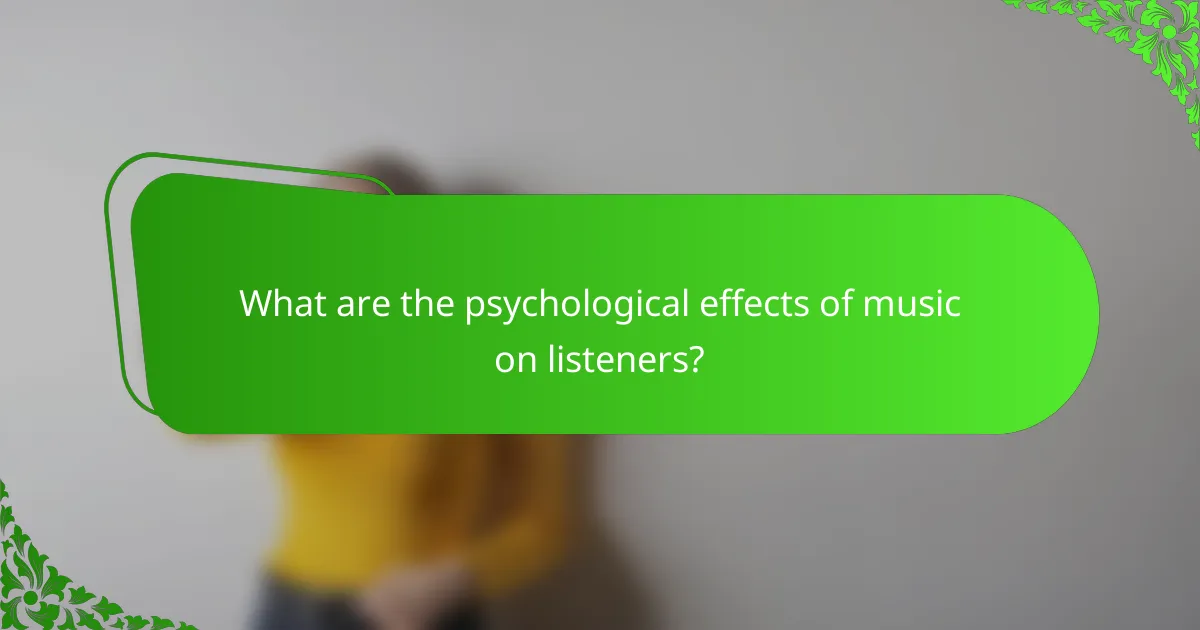
What are the psychological effects of music on listeners?
The psychological effects of music on listeners are profound, influencing emotions, mental states, and behaviors. Music can evoke strong feelings, alter mood, and even enhance cognitive functions, making it a powerful tool in various settings.
Music reduces stress and anxiety
Listening to music can significantly lower stress and anxiety levels. Studies suggest that calming music can decrease cortisol levels, a hormone associated with stress. For instance, soft instrumental music or nature sounds can create a soothing environment that promotes relaxation.
To effectively use music for stress relief, choose tracks with a slow tempo, typically around 60-80 beats per minute. Creating a playlist of your favorite calming songs can be a practical way to manage daily stressors.
Music enhances cognitive performance
Music has been shown to enhance cognitive performance, particularly in areas such as memory, attention, and problem-solving. Background music, especially classical or instrumental genres, can improve focus and productivity during tasks requiring concentration.
To maximize cognitive benefits, consider using music during study sessions or while working on complex tasks. However, be mindful of the type of music; lyrics can be distracting, so opt for instrumental versions when deep focus is needed.
Music fosters social connections
Engaging with music can strengthen social bonds and foster connections among individuals. Group activities like singing or dancing create shared experiences that enhance feelings of belonging and community.
Participating in music-related events, such as concerts or community choirs, can provide opportunities to meet new people and build friendships. Additionally, sharing music recommendations with friends can spark conversations and deepen relationships.
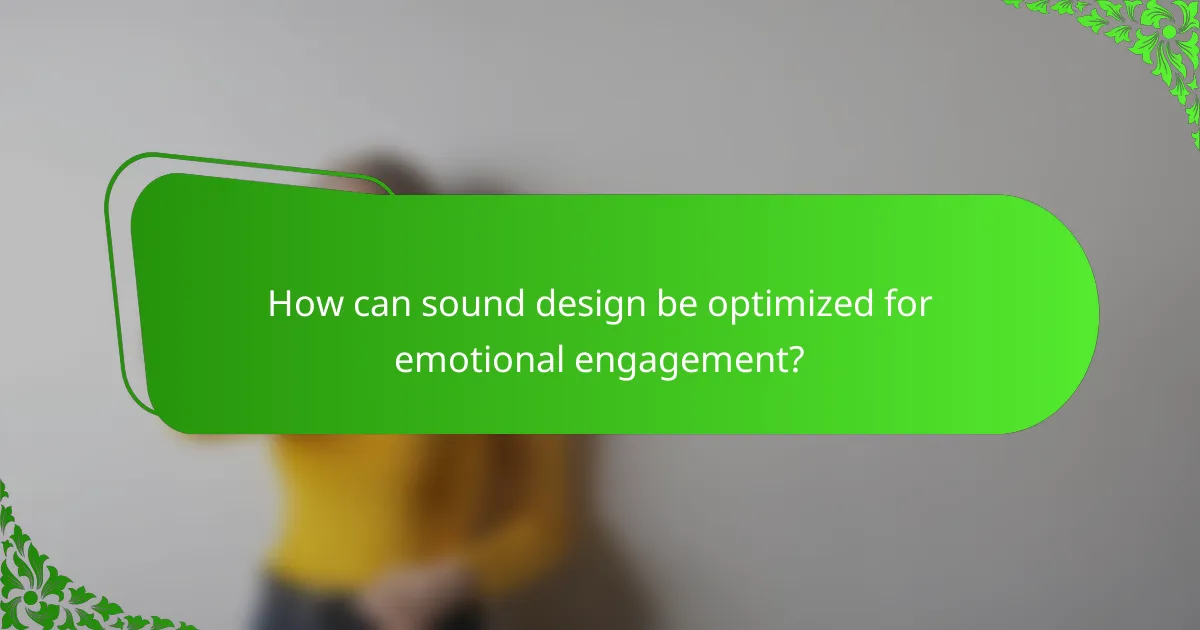
How can sound design be optimized for emotional engagement?
Sound design can be optimized for emotional engagement by carefully manipulating audio elements to evoke specific feelings in the audience. This involves utilizing techniques such as dynamic range, silence, and frequency balancing to enhance the overall impact of the auditory experience.
Utilizing dynamic range for impact
Dynamic range refers to the difference between the quietest and loudest parts of a sound. By strategically varying this range, sound designers can create moments of intensity that resonate emotionally with the audience. For instance, a sudden loud sound can heighten tension or surprise, while softer sounds can evoke intimacy or reflection.
To effectively use dynamic range, consider the context of the scene. In a dramatic moment, a sudden drop to silence followed by a loud score can amplify the emotional stakes. Aim for a dynamic range that feels natural, typically between 10-20 dB for most media, to maintain listener engagement without causing discomfort.
Incorporating silence for tension
Silence can be a powerful tool in sound design, creating tension and anticipation. By strategically placing pauses or quiet moments, designers can draw the audience’s focus and enhance emotional responses. For example, a brief silence before a climactic reveal can heighten suspense and make the subsequent sound more impactful.
When incorporating silence, ensure it serves a purpose within the narrative. Too much silence can lead to disengagement, while well-timed pauses can create a dramatic effect. Experiment with different lengths of silence, typically ranging from a few seconds to several beats, to find the right balance for the scene.
Balancing frequencies for clarity
Frequency balancing is crucial for ensuring that all audio elements are clear and impactful. By managing the low, mid, and high frequencies, sound designers can prevent muddiness and enhance emotional clarity. For instance, boosting mid frequencies can make dialogue more intelligible, while adjusting low frequencies can add warmth to music.
To achieve a balanced frequency spectrum, use equalization techniques to carve out space for each element. A common approach is to apply a low-pass filter on non-bass instruments and a high-pass filter on vocals to ensure clarity. Regularly reference your mix on different playback systems to ensure it translates well across various environments.
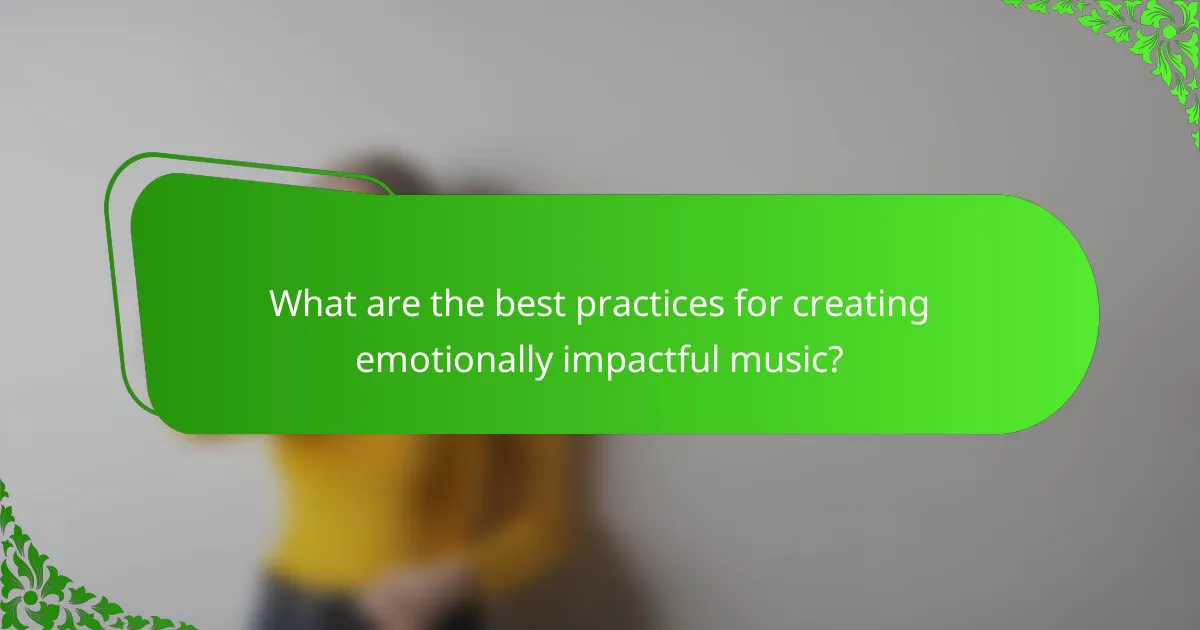
What are the best practices for creating emotionally impactful music?
To create emotionally impactful music, focus on understanding your audience’s emotional triggers and using sound design techniques that enhance those feelings. Effective use of melody, harmony, and rhythm can significantly influence listener emotions, making it essential to experiment and refine your approach.
Understanding target audience preferences
Identifying your target audience’s preferences is crucial for crafting music that resonates emotionally. Conduct surveys or engage with listeners through social media to gather insights on their favorite genres, themes, and emotional responses to different musical elements.
Consider demographic factors such as age, cultural background, and personal experiences, as these can shape how individuals perceive and react to music. Tailoring your compositions to align with these preferences can enhance emotional impact and listener engagement.
Experimenting with instrumentation
Instrumentation plays a vital role in evoking emotions through music. Experiment with various instruments to find unique combinations that resonate with your intended emotional message. For example, strings can convey warmth and nostalgia, while electronic sounds might evoke a sense of modernity or urgency.
Incorporate dynamics and texture variations to create depth and interest. Using a mix of acoustic and digital instruments can also enhance emotional expression, allowing for a richer sound palette. Regularly assess audience reactions to different instrumentations to refine your approach.


